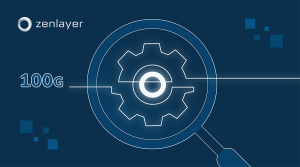Most businesses, whether they be large MNCs or SMBs, use a wide area network (WAN) to share and transfer data between their employees, customers and vendors over geographical distances.
While WANs are a good solution for establishing long-distance computer networks, they suffer from a few problems. When companies further expand their networks, they often encounter data packet loss, jitter issues, network congestion and outages.
In comparison to traditional WAN, SD-WAN solves these issues. Let’s look at the evolution of WAN and the advantages of SD-WAN.
Costly Networks
Today, many enterprises use Multiprotocol Label Switching (MPLS) to carry their data across telecommunications networks. MPLS offers some key benefits such as handling data packets consistently and mapping real-time traffic, such as video or voice data, to low-latency routes.
Organizations may love the dependability of MPLS, but it often takes 3-6 months to order and install MPLS circuits. It’s not cost-effective either, as 10Mbps Direct Internet Access (DIA) a hybrid WAN solution is less expensive in global key markets, according to a TeleGeography Q1, 2017 report. Keep in mind that hybrid WANs and SD-WANs are similar but not identical, as the former usually features a Software Defined Networking (SDN) component and multiple connection types.
WAN Routing
WAN routing is an older method for handling interior and exterior routing protocols. Interior routing involves finding the best routes within a single network, while exterior routing passes routing data from one network to another and both rely on manual configurations. This method works well for web browsing, emailing, and client-server applications but is not ideal for dynamic applications due to latency.
WAN Path Control
WAN Path Control became popular as enterprises looked to reduce latency, fully-utilize bandwidth, and handle multiple WAN links simultaneously. System administrators can set up their own policies and have granular control of multiple WAN links and traffic entirely across all their networks. Moreover, WAN Path Control intelligently load balances traffic across multiple available links, which utilizes standby lines when necessary and idle lines as a backup channel.
Hybrid WAN
Hybrid WAN is a major improvement to traditional WAN because it employs path selection from the get-go, which monitors latency in real-time and chooses the best link for traffic accordingly. Another feather in hybrid WAN’s proverbial cap is that administrators can utilize asymmetrical optimization techniques using both an Internet connection and MPLS link, whereas traditional WAN optimizations are symmetrical.
This allows traffic to flow smoothly without quality loss, as one line will switch for another as soon as there is any loss of packets, jitter, or latency issues. It’s also possible to turn an existing hybrid WAN into SD-WAN, which we’ll look into next.
SD-WAN
Many enterprises seek alternatives to WAN that are less costly, reliable, and secure and a software-based technology makes perfect sense. SD-WAN (software-defined wide area network) is available in both hardware and software forms. It decouples networking hardware from its control mechanism, thus simplifying the management of company WANs. Furthermore, it’s an ideal choice for business-critical and cloud-based applications because it prioritizes these during heavy traffic loads and link failures.
So, why choose SD-WAN when there are still companies using MPLS?
While MPLS labels and isolates packets, allowing for reliable transmission across a company’s network, it doesn’t offer built-in data protection and remains prone to vulnerabilities. SD-WAN, on the other hand, offers comprehensive security features with encryption across a company’s network and the Internet.
MPLS costs are also prohibitive for bandwidth-heavy applications such as video, augmented reality (AR), virtual reality, and mixed reality, whereas it’s much simpler and more cost-effective to scale SD-WAN according to bandwidth requirements.
Here’s a quick rundown of SD-WAN key features:
- Enhanced Performance – SD-WAN utilizes caching to store recently accessed data in memory to improve application speeds. Also, SD-WAN software keeps clear of the data path and detects traffic routes with the lowest latency, which helps speed up the transfer of packets.
- Improved Security – SD-WAN supports Internet Protocol Security (IPsec), an open standard that is commonly used for WAN security. Moreover, authentication, deception, encryption, and monitoring tools help enhance security on SD-WAN networks.
- Reliability – SD-WAN detects outages in real time and switches over to working links reducing potential downtimes.
- Quality of Service – SD-WAN prioritizes mission-critical applications through dynamic path selection, spitting the application between two paths for quicker delivery, or sending it through on a faster link. This helps applications comply with their respective Service Level Agreements (SLAs).
- Simple Configuration and Troubleshooting – SD-WAN favors simplicity over complexity even during the administration process. It offers software control of each networked and virtual appliance via an easy-to-use graphical user interface (GUI). Administrators can push out configuration changes on the fly, and path selection is automatic.
- Network Emulation – SD-WAN typically features built-in network emulation that accurately assesses the performance of the network.
- Easy Deployment – SD-WAN comes packaged as a virtual or pre-configured appliance. The virtual variant works on cloud services or existing network hardware, while the pre-configured variant is an edge device installed at a company’s offices, data centers, and other remote locations.
- Adaptive Traffic Engineering – SD-WAN makes it easy for data center managers to monitor and manage resources on their SD-WAN networks and assign new transfer requests when needed.
To learn more about how SD-WAN can fit into your IT strategy, contact a Zenlayer expert today or start a free 30-day trial.







